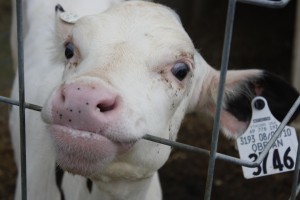 For 2 days at the end of August, almost 200 state veterinarians and livestock industry representatives met in Denver to share suggestions for and concerns about the USDA’s traceability framework, announced in February of this year.
For 2 days at the end of August, almost 200 state veterinarians and livestock industry representatives met in Denver to share suggestions for and concerns about the USDA’s traceability framework, announced in February of this year.
The National Institute for Animal Agriculture and US Animal Health Association jointly sponsored this forum on animal traceability to coincide with the release of draft guidance developed by the Traceability Regulatory Working Group. This was a unique opportunity to see a draft of a regulation prior to its release as a proposed rule with the standard 60-to-90 day window for public comment. That is expected to happen in April 2011.
I went along to see how these groups would facilitate development of a consensus and find out more about traceability needs and concerns around the country. The stage was set by one of the state vets who clearly stated that this forum was for productive discussion. Essentially, naysayers were not welcome. I found it interesting that all of the people I talked with had some naysayers in their state and they all were saying the same things and had not changed their tune even with the USDA’s abandonment of pursuing a national animal identification system (NAIS). From my understanding of the situation, small holder livestock or poultry producers raising animals for their own or local (in-state) consumption could choose not to participate (in NAIS or the new framework) and this would have minimal impact on the effectiveness of the program. It would, however, potentially put those producers at a disadvantage for receiving assistance from state animal health authorities in an emergency.
Personally, I am glad that the USDA has taken a new approach to the challenge of traceability. The best explanation I heard of the difference between NAIS and the new framework was that the bookends have changed. Instead of having a goal of tracking animals from birth to death (NAIS), the new framework’s goal is to track animals that cross state lines. Some would say we are already doing that. Animals moving from one state to another are required to have valid Certificates of Veterinary Inspection. But if these are paper-based and tied to metal ear tags, like the orange Bang’s tags or silver “brite” tags, think about how long it would take to trace an animal if your state imports 10,000 animals a year. Right now tuberculosis, TB, is on the move in cattle and the current system is proving inadequate to economically and efficiently conduct traces. If the disease was a fast-moving disease like foot-and-mouth disease, the current system would be practically useless.

